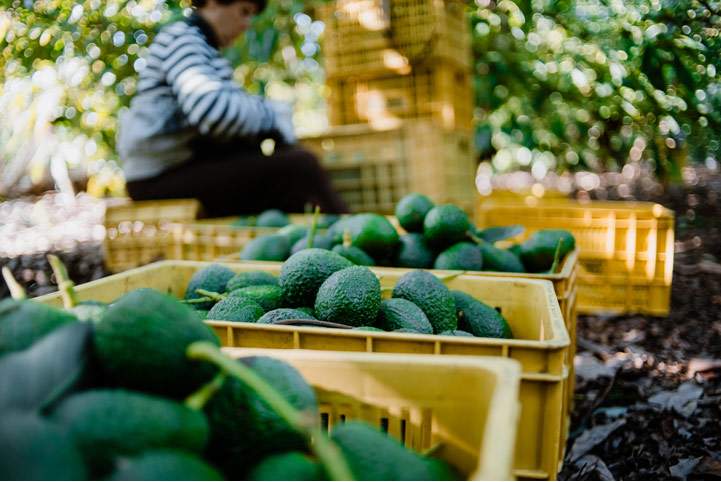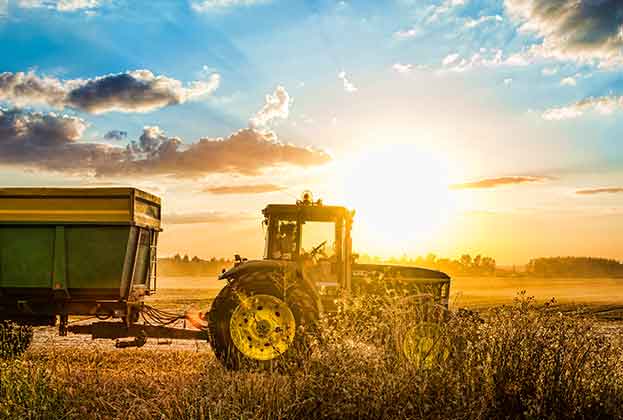Crop productivity and varied geography make it a thriving agricultural economy
Spain has one of Europe’s largest and arguably most advanced agricultural sectors. It is a leading producer and exporter of high-value crops such as vegetables, fruit and tree nuts, and is also the centre for off-season production of fresh produce for the northern European winters. Investors and corporates can gain great advantage from exposure to farmland and agriculture there. Spain’s geography and many microclimates can provide good mitigation to the climate change risks that affect agriculture across the world.
Crops
- Salads and Mediterranean vegetables
Spain is Europe’s largest producer of salad crops such as lettuce, celery and cucumbers. In addition to its domestic consumption, it is Europe’s largest producer of salads for northern Europe during the winter months. Spain is also a major producer of Mediterranean vegetables such as tomatoes, peppers, cucumbers, aubergines and courgettes, which grow best in protected greenhouse conditions. The climate in the south of Spain provides sufficient heat that polytunnels or greenhouses do not require artificial heating. As a result, Spain has become a major producer of these types of vegetables and is the second largest exporter worldwide, exporting to 64 destinations – the most significant being Germany, France, the United Kingdom and the Netherlands.
- Tree nuts
Global almond consumption has increased at an annual average rate of 4.8% over the last 20 years and Spain, as the world’s second-largest almond-producing country, is very well placed to take advantage of this. Spain is also Europe’s largest producer of pistachios and pecans and the seventh largest producer of walnuts, as well as Europe’s largest exporter of tree nuts.
- Fruit
Spain is Europe’s largest producer of fruits such as avocados, strawberries, blueberries and citrus fruit. This has attracted a huge amount of investor interest, and areas of blueberries and avocados have increased from 9,000 to around 23,000 hectares over the past five years.
- Other crops
Spain is the world’s largest producer of olives, both table olives and olive oil. Investor interest in olive orchards has also increased, not least as they have been shown to sequester carbon very effectively, thereby providing additional income streams in the carbon credit market. Spain is also a major producer of field vegetables including onions, broccoli and potatoes.

Main producing regions
The majority of productive agricultural land is located within an arc from the Pyrenees (in Catalonia and Aragon) down through the major citrus and salad-producing regions of Valencia and Murcia, towards Castilla-La Mancha, Andalucia and Extremadura where most tree crops such as olives and tree nuts are produced. The coastal areas of Andalucia are also major salad and Mediterranean vegetable-producing regions (particularly in Almeria, Granada and Malaga) with Huelva a centre for avocados, blueberries, citrus and strawberries.
Overseas investment has traditionally been in the vegetable sector, with many UK fresh produce groups establishing operations in order to supply the UK during the winter. More recently, there has been a trend to invest in crops such as tree nuts, olives, citrus, avocados and blueberries, not only as a diversifier to the traditional producing regions of the world in North and South America but also reflecting Spain’s own status as a leading producer of these high demand crops. Regions of interest have been the Cordoba area of Andalucia, Extremadura, Aragon and Castilla-La Mancha, where farms of over 500 hectares and investments of €10 million or more can readily be made. A number of farm contracting and agronomy businesses exist in those regions as well, meaning that investors wishing to gain direct exposure to crop markets can outsource the day-to-day crop management process.
Climate change
Rainfall in major agricultural producing regions of Spain has always been typically lower than in northern Europe. This can have benefits as well as drawbacks, as disease pressure can often be less, which can be crucial for growers of high-value crops, and issues with field logistics as a result of rainfall can largely be avoided. The lack of rain has traditionally not affected crop water availability as the high water demands of vegetable, fruit and nut crops have been supplied by irrigation. This is sourced through a combination of surface water and boreholes, depending on the location, with major rivers including the Guadiana (for Huelva and Extremadura), Guadalquivir (for northern Andalucia), Tagus (for Castilla-La Mancha), Segura (for Murcia and Valencia) and Ebro (for Aragon and Catalonia). Rising temperatures have led to a concern that the mountain precipitation that feeds surface water may potentially be compromised in future. Investors and operators can prepare for this by:
- Investing in a variety of locations and, where possible, crop types: locations that now may be well suited for the production of specific crops may in the future become suboptimal, while locations further north that may not have ideal temperature levels currently may well be suitable later on. Salad producers, traditionally located in the coastal areas of Murcia, are moving into cooler mountainous areas where water availability is less compromised. Likewise, almond investors are diversifying between Cordoba (traditionally an area of strength for almond production), Extremadura (where surface irrigation water availability has been shown statistically to be unaffected by higher temperatures) and Aragon (where there is more reliable water availability due to its mountainous location).
- Studying historic irrigation drought resilience: examples include Extremadura or southern Castilla-La Mancha, which in times of irrigation restriction had minimal or no restrictions. These areas have attracted significant investment in water-sensitive crops such as almonds.
- Diversifying into new crops or varieties: climate change has made large-scale avocado production in southern Spain possible, where previously the suitable microclimates were extremely limited. Plant breeders, particularly those based in Spain have also developed drought-resistant varieties of crops to further mitigate climate change. In some locations where water is compromised, almonds for instance have been replaced with olives, irrigated cork or solar farms.
- Adopting a long-term investment horizon: the highest level of climate volatility often occurs in the short term, with crop productivity often far more consistent when a long-term average is taken.
INVESTMENT RETURNS
Investing in agriculture can generate returns in two ways; through an annual income whether from leasing or directly operating, and through appreciation of the underlying farmland asset. In Spain, farmland investment returns are dominated by the annual cash yield component. Cash yields range from around 7% for leased olive orchards or covered vegetable crops, through to 12% or higher if operational risk is taken with crops such as avocados or almonds.
Land price appreciation is less significant than in other geographies; this is mostly connected to the fact that many of the assets contain a significant depreciating component, such as trees, irrigation systems, greenhouses or polytunnels, which often offsets appreciation of the underlying land. At the same time, the cash yield component gives a degree of predictability to the return profile.
WHY? AND WHY NOW?
- Spain is Europe’s leading producer of many key fruits, vegetables and tree nuts.
- Spain is one of Europe’s leading agricultural economies and has an unparalleled business environment for the sector to thrive.
- Cash yields for agriculture assets continue to increase.
- Large-scale properties of 500 hectares or more continue to come to the market
Read the articles within Spotlight: Global Farmland below.
.jpg)

